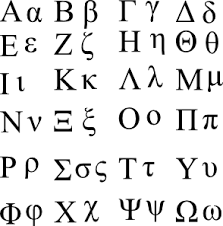All practitioners in each sector, in each department and in all settings have a responsibility to develop, reinforce and extend the skills which are set out in the literacy experiences and outcomes (Curriculum for Excellence).
Teaching:My remit covers all schools in the region. Therefore I do not – cannot – use my time to teach basic literacy skills, although of course I work with colleagues to support them in meeting the learning needs of individual learners with literacy difficulties. I try to help students learn how to learn better, with the intention that they gradually build up skills which leads to independence. Regular Staged Assessment and Intervention meetings ensure that all learning and teaching is balanced and coherent. At each meeting we assess the effectiveness of our work and build on our knowledge of the child’s needs to plan for the future.
Many learners find identifying key concepts very taxing. This is especially difficult for some learners with dyslexia who tend to think in global terms – the big picture – rather than noticing the detail (the wood not the trees). This can cause problems when analysing text, whether spoken or read. Mind Mapping is a most effective tool for those learners with visual strengths to plan and organise their thoughts.
I find that teaching a whole class how to make Mind Maps is an effective use of my time. In one school we recognised that two learners with dyslexia in one P3/4 class learnt best through visualisation and the use of images rather than words. We felt that those whose natural style of learning was more verbal, linear and ordered would benefit from the challenge of approaching planning in a different format.
So the class used Kidspiration to prepare a talk to the P1s on Road Safety. After exploring the software they taught others in the class about the various tools (aren’t interactive whiteboards wonderful?). The final assessment was for them to create a Wanted poster of a master criminal outlining the essential things the public should look out for.
Identifying key words is crucial if learners are to progress. The children were repeatedly told that there was no need to write beautifully presented sentences while Mind Mapping. Whether they have taken this radical notion on board is yet to be seen. It always astonishes me that children are so wedded to perfect presentation even when their teachers are very clear that the expectation is of good content not error free writing.
Three other teaching blocks have also centred on developing note making.
A group of P7s with literacy and organisational difficulties learned how to access text with WordTalk. They listened to texts they found impossible to read but which was at their cognitive level. Highlighting key words was a challenge but when done collaboratively enabled them to make Mind Maps with Kidspiration. These they took back to class as plans for pieces of writing. This work culminated in the creation of an animation about the Solar System – to be processed over the holidays.
I supported another group of p7s in preparing pieces of writing on the theme, Homes of the Future. We viewed a video and designed an estate agent’s schedule describing the technological and environmental aids to support future living. Plans in the form of Mind Maps were put into the class Glow Group and the group used these to write independently in class. I shall continue to work with this group in the new year, not least to consolidate my own understanding of using Glow in a real setting.
A similar group at another school was learning about World War 2. They prepared and delivered a session to the rest of their class demonstrating how to use WordTalk. They now mentor their peers – and their teacher.
A group of P3’s used Clicker 5 to create text from grids about the Ancient Egyptians. I found this a difficult enterprise for various reasons although the children seemed to enjoy the attention even if they are not empowered to use Clicker independently yet. They were thrilled with the pencils and badges I got from the British Museum. I hope they remember more than these though! I shall return to the school to monitor their progress later in the session.
An individual P5 pupil with significant auditory memory difficulties needed help to focus and follow directions. He practised listening mindfully, repeating instructions to himself and rehearsing these aloud. He then completed tasks to demonstrate his understanding.
We also worked on creating a safe place (a cave) in his mind to which to retreat when he became stressed. Naturally I spent time with his parents and teachers so that his learning is reinforced at home and in class.
I used a similar approach to work with another 2 pupils in P6 with auditory and visual memory difficulties which caused severe sequencing and organisation problems. This time we identified sources of stress in the morning routine that meant frequent late arrival at school. We made laminated cards and prioritised the morning activities. It took some time to convince the children that watching TV was less crucial than getting dressed! Again, this is a long-term outcome that can only be effective if the child, family and school work together.
The imminence of Standard Grade prelims exams saw me supporting 3 learners with dyslexia who find planning and organising revision a real challenge. A traffic light system helped them identify subjects and topics on which they needed to focus. They made timetables incorporating study as well as leisure time in the weeks prior to the exams. It will be interesting to see whether they achieve greater success as a result of this intervention.
Assessment and Consultation: I continue to use the computerised assessment along with formative assessment to identify needs and design interventions. I have formally assessed and consulted about 25 pupils this term. In addition, I attended Staged Assessment and Intervention meetings with parents and staff for 13 other children.
Policy:
- Literacy Strategy sub-group: I am working with 2 colleagues to improve the Dyslexia Friendly Schools Pledge that 5 schools piloted last session. We aim to clarify the language and process of the checklist, make specific links with Curriculum for Excellence, HMIE guidance and current legislation.
- I liaise with the other literacy strategy sub-groups to ensure ‘joined up thinking’.
- There is ongoing work with a small working group writing guidance on effective use of the Books for All project.
CPD:
- Dorothy Crystal, the optometrist, spoke about her work identifying visual stress.
- 6 of the 8 modules of the ‘Hidden Dyslexia’ online course completed.
- Child Protection course.
- Planning and organisation skills – Occupational Therapy.
- CfE in practice course.
- Cluster meetings.
Once more this has been a busy but fulfilling term.




